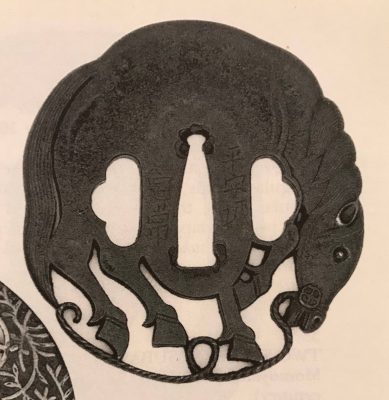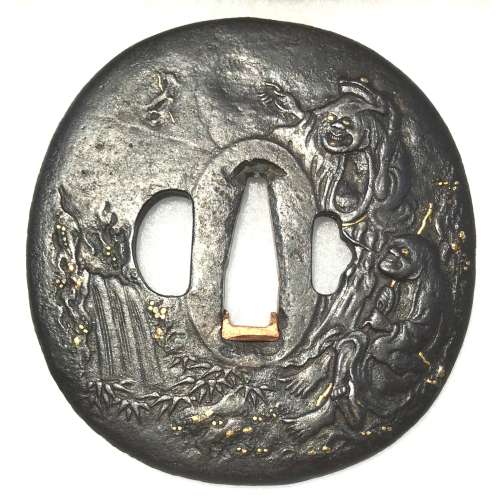Two volumes in-16
o, 16.3 x 10.3 cm, uniformly bound in marbled calf with gilt triple-fillet border, flat spine with gilt lozenges in compartments, two crimson labels with gilt lettering, marbled endpapers, all edges gilt, with engraved title, 2 title vignettes, 11 copper plate engravings, incl. title/frontispiece in vol. 1, and 10 headpieces (two of them similar), printed on laid paper.
Vol. 1: Livres 1 – 5.
Engraved title-page: Cartouche with the title "Les | Amours de | THEAGENES | & | CHARICLÉE", with a Cupid holding a torch on top and a defeated winged dragon at the bottom; Cupid's quivers with bows and arrows beside.
Collation: 8vo; a
5 (t.p., preface), A-N
8 O
4 (O
4 blank), total 113 leaves plus 6 unsigned engraved plates, incl. engraved title as frontispiece, unsigned; 5 different headpieces, unsigned.
Pagination: [i, ii] iii-x, [1] 2-213 [3] (blank), total 226 pages, ils.
Vol. 2: Livres 6 – 10.
Collation: 8vo; π
1 (t.p.), A-M
8, total 97 leaves plus 6 unsigned plates, incl. the
Conclusion, no frontispiece; 5 headpieces, the headpiece for Livre 7 similar to Livre 4.
Pagination: [2] [1] 2-190 [2] (blank), total 194 pages, ils.
Letterpress title-page (red and black) in each volume:
AMOURS | DE |
THEAGÉNES | ET |
CHARICLÉE• |
HISTOIRE ETHIOPIQUE. |
PREMIERE (
SECONDE)
PARTIE. | {vignette} |
A LONDRES, | — | M. DCC. XLIII. ||
According to Cohen-DeRicci, this is the first anonymous edition with 9 different headpieces; the second edition in the same 1743 was published by Antoine Urban Coustelier (French, 1714 – 1763) in Paris with less provocative headpiece vignettes.
The original text belongs to Héliodore d'Emèse, i.e.
Heliodorus [Ἡλιόδωρος] (Greek, 3
rd – 4
th century AD). The earliest translation into French was performed by
Jacques Amyot (French, 1513 – 1593) and published by J. Longis in Paris in 1547. The new translation is credited by Lewine to
Jean de Montlyard (French/Swiss, 17
th century), first published in Paris in 1620. However, most scholars attribute it to
Louis François de Fontenu (French, 1667 – 1759),
Bernard Le Bovier de Fontenelle (French, 1657 – 1757) or
Germain François Poullain de Saint-Foix (French, 1698 – 1776), first published in 1727 by
Herman Uytwerf (Dutch, 1698 – 1754) in Amsterdam.
Catalogue raisonné : J. Lewine, 236; Cohen-DeRicci, 478.
Information about the story can be found here:
Aethiopica.























